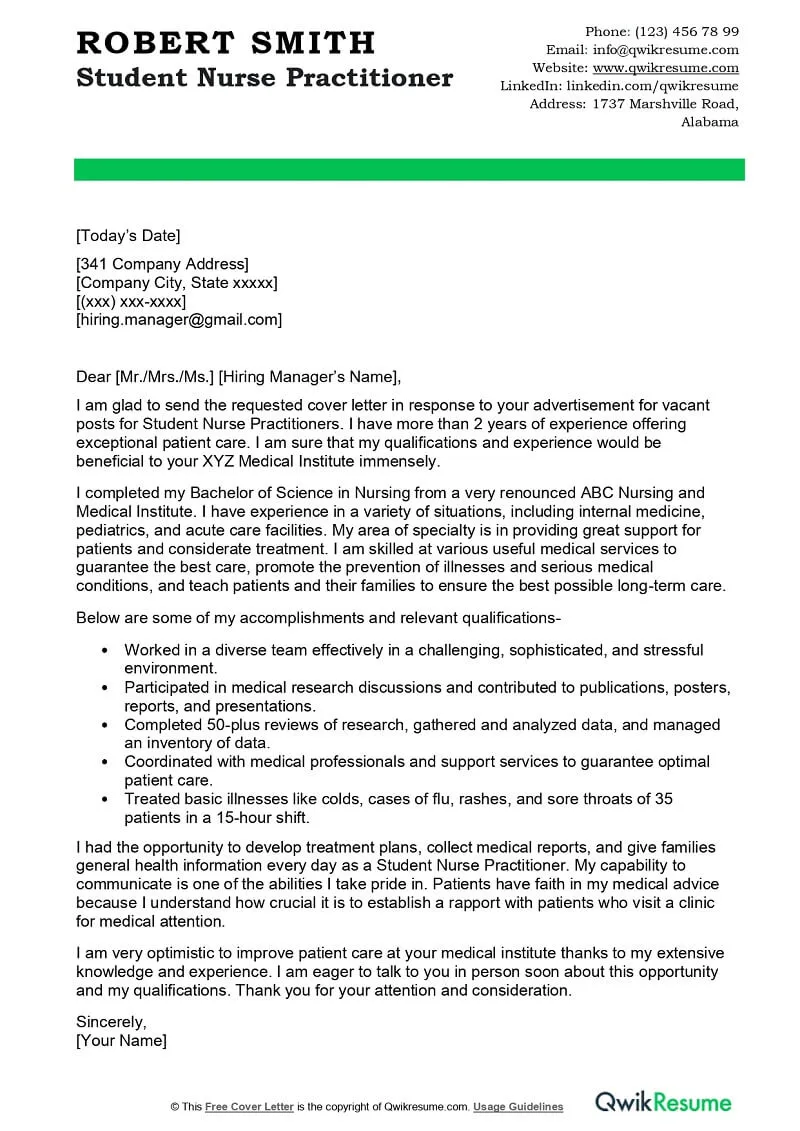Key Components of a Nurse Practitioner Cover Letter
A well-crafted cover letter is a crucial tool in a nurse practitioner student’s job search. It’s your first chance to make a strong impression and showcase your qualifications beyond your resume. This guide breaks down the essential components of a compelling cover letter, helping you secure that coveted nurse practitioner position. Remember that each cover letter should be tailored to the specific job and employer. This personalization demonstrates your genuine interest and increases your chances of getting noticed. Always proofread carefully!
Contact Information
Your Name and Credentials
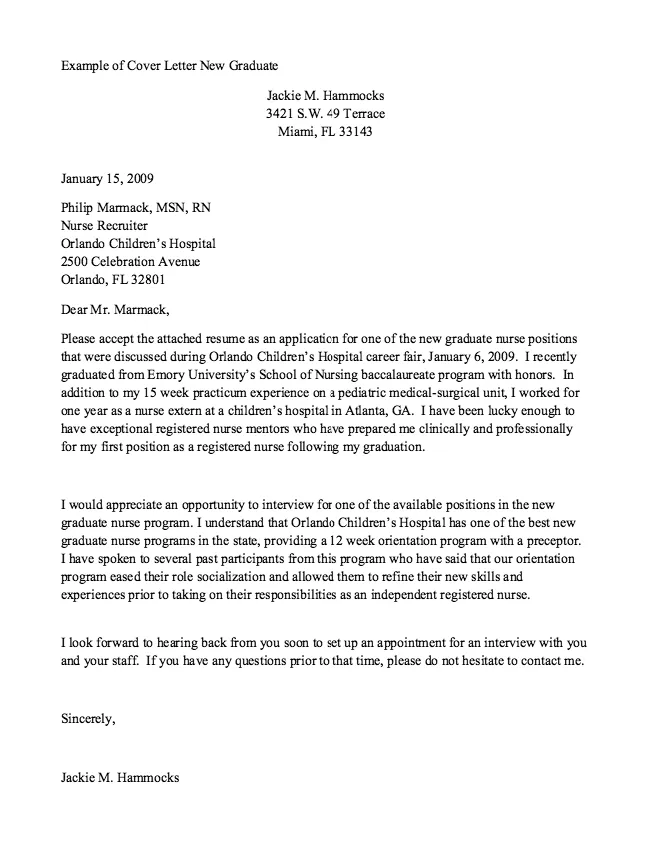
Start your cover letter by clearly stating your full name, any relevant nursing credentials (e.g., RN, BSN), and your current program of study. Include your email address and phone number. Ensure this information is accurate and professional. It should be easy for the hiring manager to contact you. Consider including a link to your online professional profile if you have one, such as a LinkedIn profile.
Employer Contact Information
Research the hiring manager’s name and title. If you cannot find it, address the letter to “Hiring Manager.” Include the employer’s name, the department, and the address where you are submitting the application. This shows your attention to detail and respect for the organization. Correct formatting shows that you’ve taken the time to learn more about the position and the company.
Greeting
Addressing the Hiring Manager
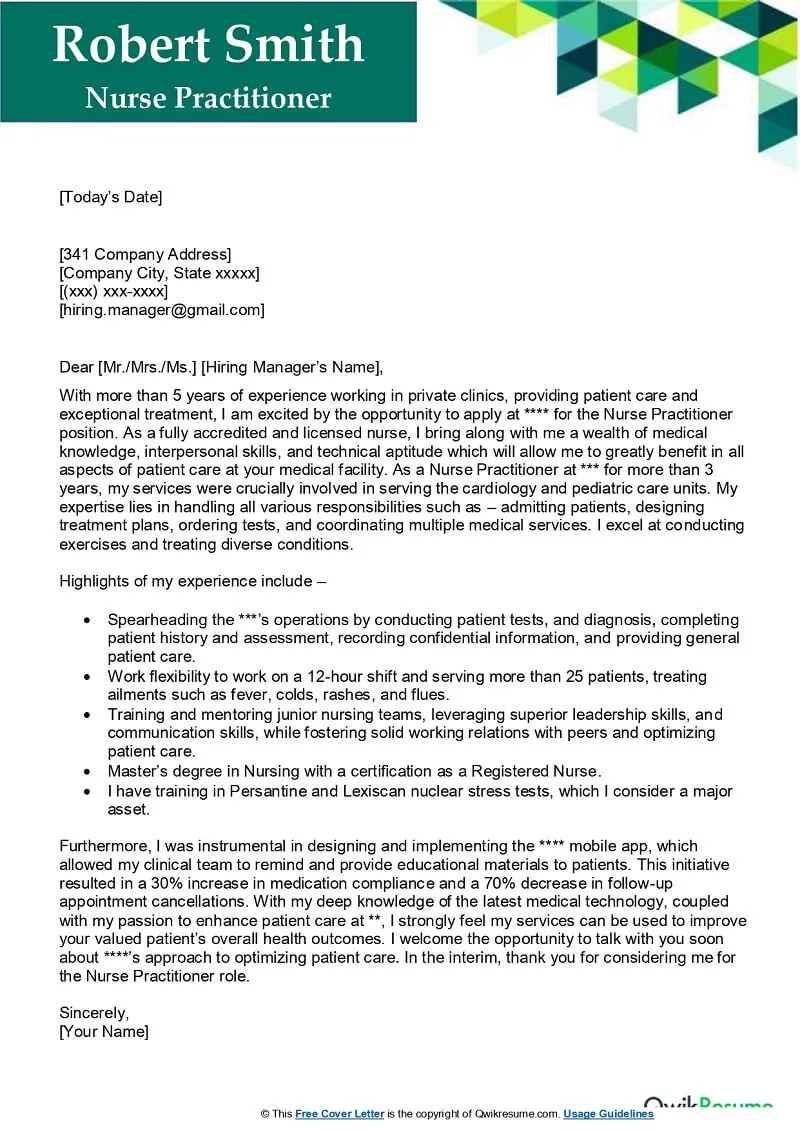
Use a professional greeting such as “Dear Mr./Ms./Dr. [Last Name],” if you know the hiring manager’s name. Avoid generic greetings like “To Whom It May Concern” or “Dear Sir/Madam” whenever possible. If you’re unsure of the name, “Dear Hiring Manager” is acceptable. This shows respect and personalizes your cover letter, setting a positive tone from the start. This small step can make a significant difference in how your application is perceived.
Body Paragraphs
Opening Paragraph
Expressing Interest and Stating Purpose
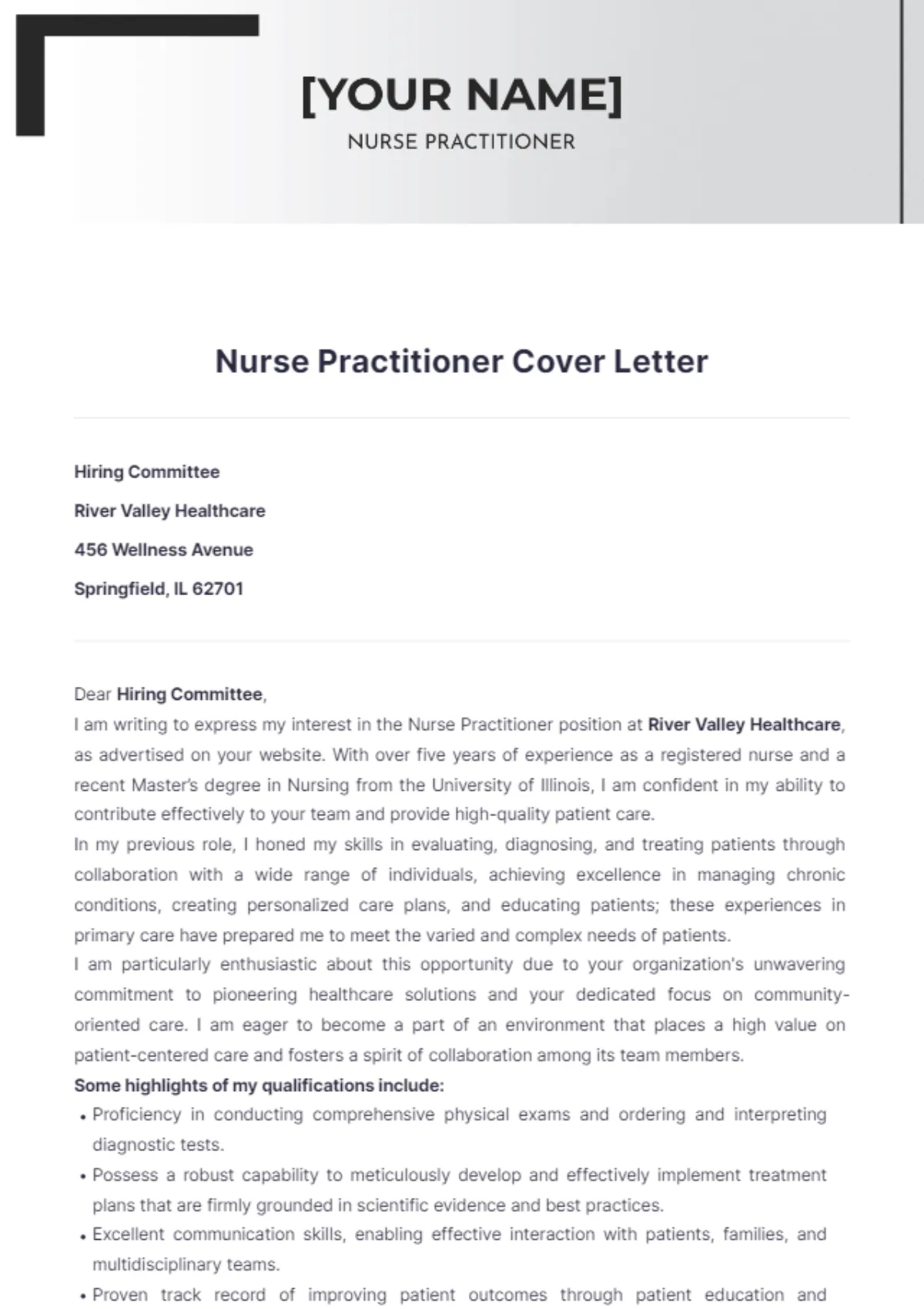
The opening paragraph is your hook. Clearly state the position you are applying for and where you found the job posting. Express your enthusiasm for the opportunity and the organization. Briefly mention why you’re interested in this specific role and what makes you a good fit. For example, mention the specific values of the organization that align with your own professional goals. This sets the stage for the rest of your cover letter and captures the reader’s attention.
Highlighting Relevant Skills and Experience
Clinical Rotations and Specializations
Detail your clinical experiences, including specific rotations and any specializations you’ve pursued. Mention the settings, patient populations, and specific procedures or skills you have gained. This section should align with the job description’s requirements. Use action verbs to describe your accomplishments and responsibilities. For instance, “Managed a caseload of 15 patients” or “Performed advanced physical assessments.” Be as specific as possible to showcase your expertise. (Image: nurse-practitioner-student-skills)
Quantifiable Achievements and Accomplishments
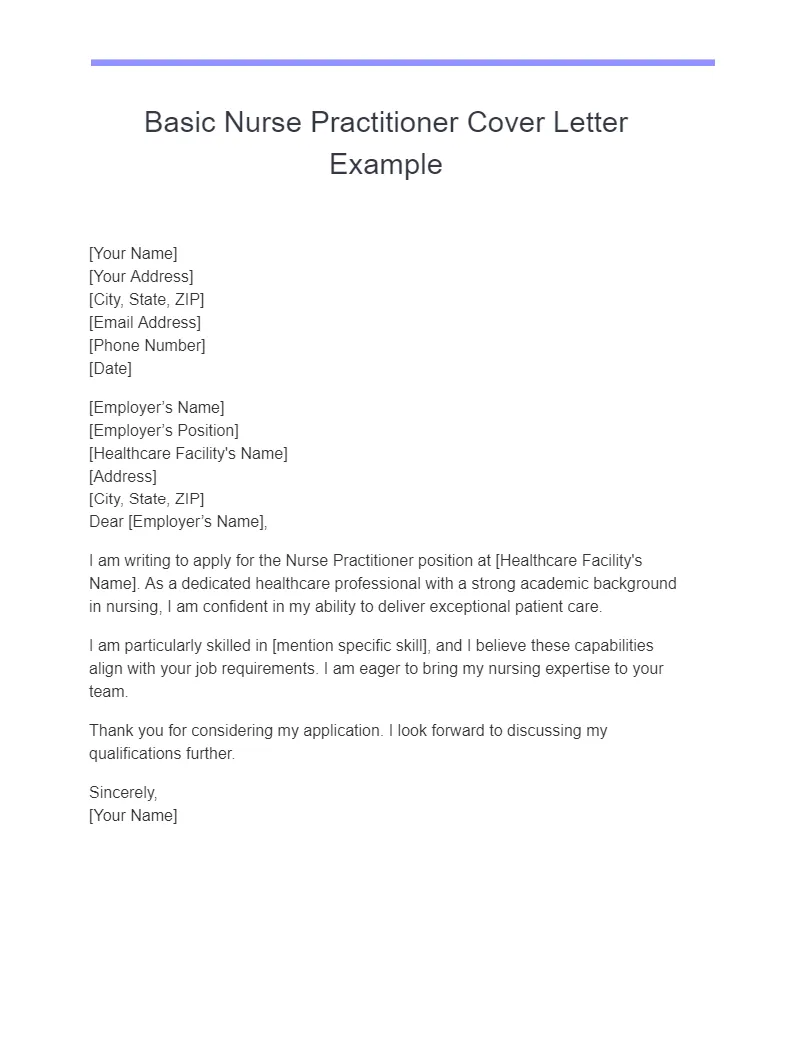
Whenever possible, quantify your achievements. Use numbers to demonstrate your impact. For example, “Improved patient satisfaction scores by 15%” or “Reduced medication errors by 10%.” This provides concrete evidence of your capabilities. Include any awards, certifications, or recognition you’ve received. This adds credibility and showcases your commitment to excellence in the field of nursing.
Demonstrating Passion for Nursing and Patient Care
Convey your passion for nursing and patient care. Describe your approach to patient care, emphasizing empathy, communication, and a patient-centered focus. Explain why you are drawn to the role and the specific organization. Share any experiences that have shaped your desire to become a nurse practitioner. Use specific examples to illustrate your commitment to providing high-quality care. (Image: nurse-practitioner-patient-care)
Closing Paragraph
Reiterating Interest and Gratitude
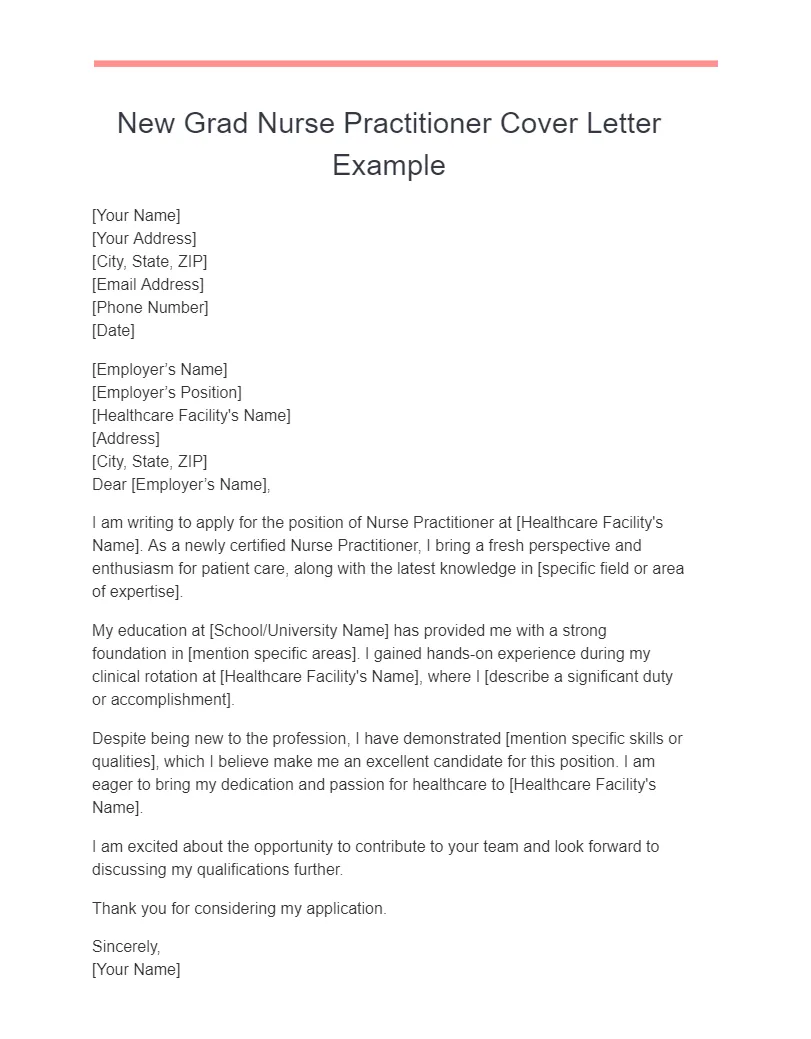
Reiterate your interest in the position and express your gratitude for the hiring manager’s time and consideration. Thank them for reviewing your application. This shows respect and reinforces your enthusiasm. A positive closing reinforces your professionalism.
Call to Action and Next Steps
Include a call to action. State that you are available for an interview and provide your contact information. Mention your willingness to discuss your qualifications further. Indicate your availability for an interview and thank them once more. This makes it easy for the employer to take the next step. (Image: nurse-practitioner-resume)
Formatting and Style Guide
Font and Margin Recommendations
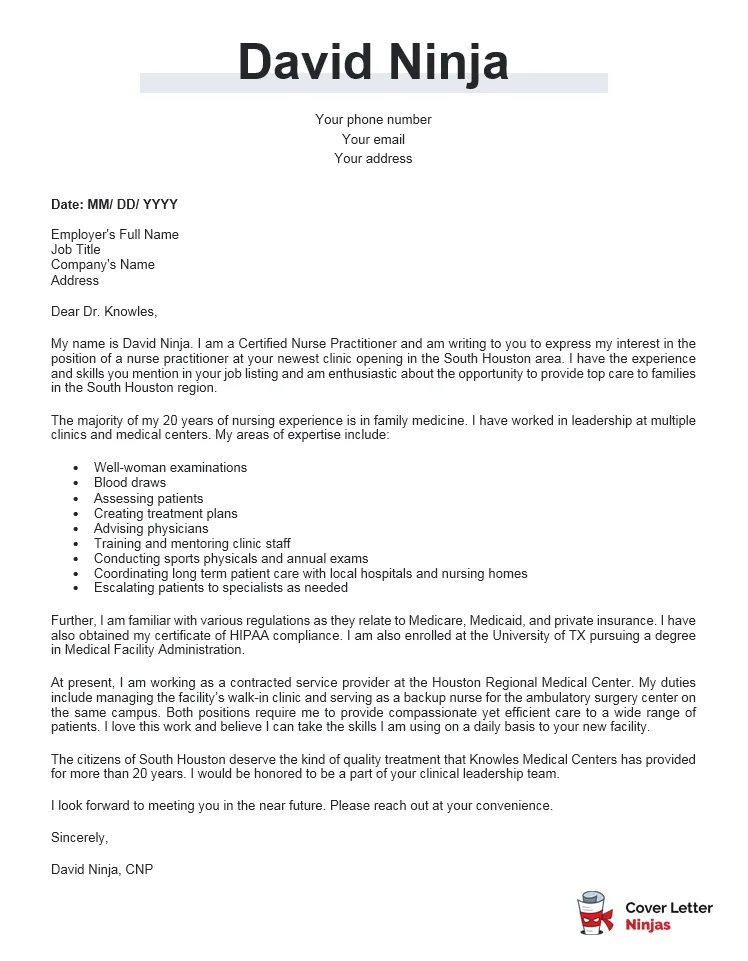
Choose a professional font, such as Times New Roman, Arial, or Calibri, with a font size of 11 or 12 points. Use standard 1-inch margins. Ensure your cover letter is easy to read and visually appealing. Proper formatting makes a good impression and shows attention to detail. Consistent formatting is vital for readability. (Image: cover-letter-formatting)
Proofreading and Editing Checklist
Proofread your cover letter meticulously. Check for typos, grammatical errors, and spelling mistakes. Have a friend or mentor review it as well. Ensure your tone is professional and enthusiastic. Use a spell checker and grammar checker, but don’t rely on them entirely. Proofreading is a crucial step to ensure your letter represents you well. (Image: cover-letter-proofreading)
Common Mistakes to Avoid
Generic Cover Letters
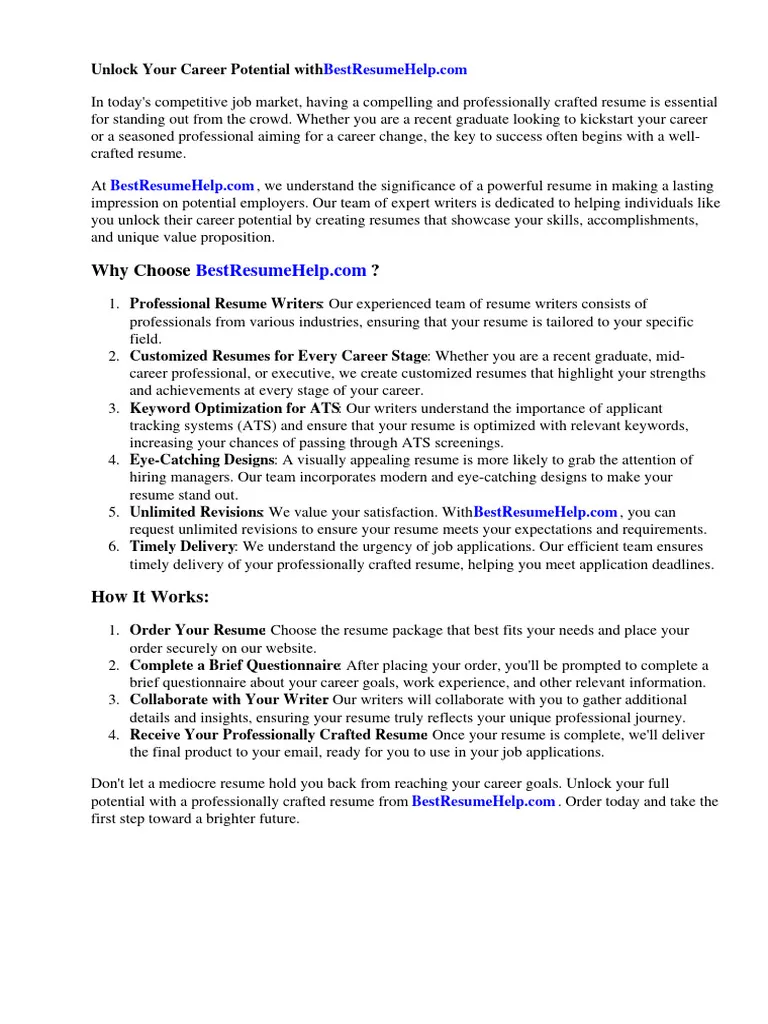
Avoid using a generic cover letter. Tailor each cover letter to the specific job and organization. Research the company and demonstrate your understanding of their mission and values. Customization shows you’ve put in the effort to apply. A generic cover letter will not stand out from the crowd. Show the employer that you are genuinely interested in the specific position. (Image: nurse-practitioner-mistakes)
Typos and Grammatical Errors
Typos and grammatical errors are a major turn-off for hiring managers. Always proofread carefully. Consider using a grammar checker, but also proofread yourself. Errors make your application look unprofessional. A polished cover letter shows that you pay attention to detail. Make sure that the document is easy to read, and the points are clearly articulated.
Lack of Specificity
Avoid vague statements. Be specific about your skills, experience, and accomplishments. Use examples to illustrate your capabilities. Quantify your achievements whenever possible. Provide data and concrete examples. Generic phrases don’t make a strong impression. Demonstrate your value to the employer. Show them what you can do. (Image: nurse-practitioner-achievements)
